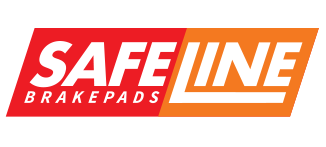FAQ’s
Safeline’s customer service support team consists of a panel of technical experts who have years of experience working on the vehicle braking system.
Why does Safeline brake pads have a layer?
Safeline brake pads have a friction layer called Safetrac. It assists with the bedding-in process, meaning Safeline has maximum stopping power from the very first stop.
How do I know if my brake pads are genuine Safeline or counterfeit parts?
Genuine Safeline brake pads have a Safeline logo. Our locally manufactured brake pads include a pin-stamped batch number on the backing plate. Safeline’s imported range of brake pads are packaged in a box with a tamper-proof seal and tape. If this clear plastic seal/red tape has been removed from the lid, it’s not genuine Safeline.
What causes brake dust on my rims?
Brake dust is caused by the wearing of brake pad friction material and disc when they come into contact. Safeline brakes undergo continuous on-vehicle testing to ensure the brake dust is not excessive. To avoid excessive brake dust collecting on rims, avoid cleaning with oil-based substances and ensure rims are dry before driving.
Does brake fluid affect the lifespan of brake pads?
If the brake fluid service intervals are followed, correct brake fluid is used as per manufacturer's specifications, and the brake fluid level is correct, the lifespan of brake pads will not be affected. Note that the brake fluid should never come into contact with the brake pads.
What causes brake pads to vibrate?
Vibration and noise are typically caused when brake discs are worn unevenly or warped. To avoid this, it is recommended that new brake discs are fitted or the brake discs are skimmed when fitting new brake pads and the bedding-in procedure is followed. This problem also occurs when the brake system is improperly maintained or contaminated with oil, dirt, or other substances. Also, allow brakes to cool down before doing a car wash. Failure to do so can result in warped brake discs.
What causes spongy brakes?
The most common cause of spongy brakes is the presence of air in the hydraulic braking system. Most braking systems use a hydraulic operating principle, which relies on an incompressible fluid (brake fluid). If there is air present in the system, the brakes will fail to operate correctly. If the brakes feel spongy, it is recommended that the brake system is bled, checked for leaks and repaired. Also ensure that the brake fluid is inspected and replaced regularly as per the manufacturer’s guidelines.
Which brake pads are the best?
Safeline Brake pads are the safest brake pads in South Africa according to the AMS fade test. [Safeline Safety]
Safeline brake pads are the only brake pads in South Africa with both E-mark and SABS certification.
How can I inspect brakes?
Brakes inspection requires an accredited mechanic, but one can simply jack-up a car to check for themselves. Use axel supports to remove the wheel and check that the distance between the backing plate and disc is a minimum of at least 2mm. If less, brake pads need to be replaced. Brake fluid should also be checked and topped up if necessary. Other brake system checks: [Troubleshooting]
How do I know I need to replace the brake hoses?
Check for damage, leaks, twisting and ballooning.
How do I know when to replace my brake pads before damaging the discs?
Check the distance between the backing plate and disc which has to be a minimum of at least 2mm. If less, brake pads need to be replaced.
Do I have to skim the discs every time I replace brake pads?
Yes, however, it must not go below the minimum thickness of the disc.
